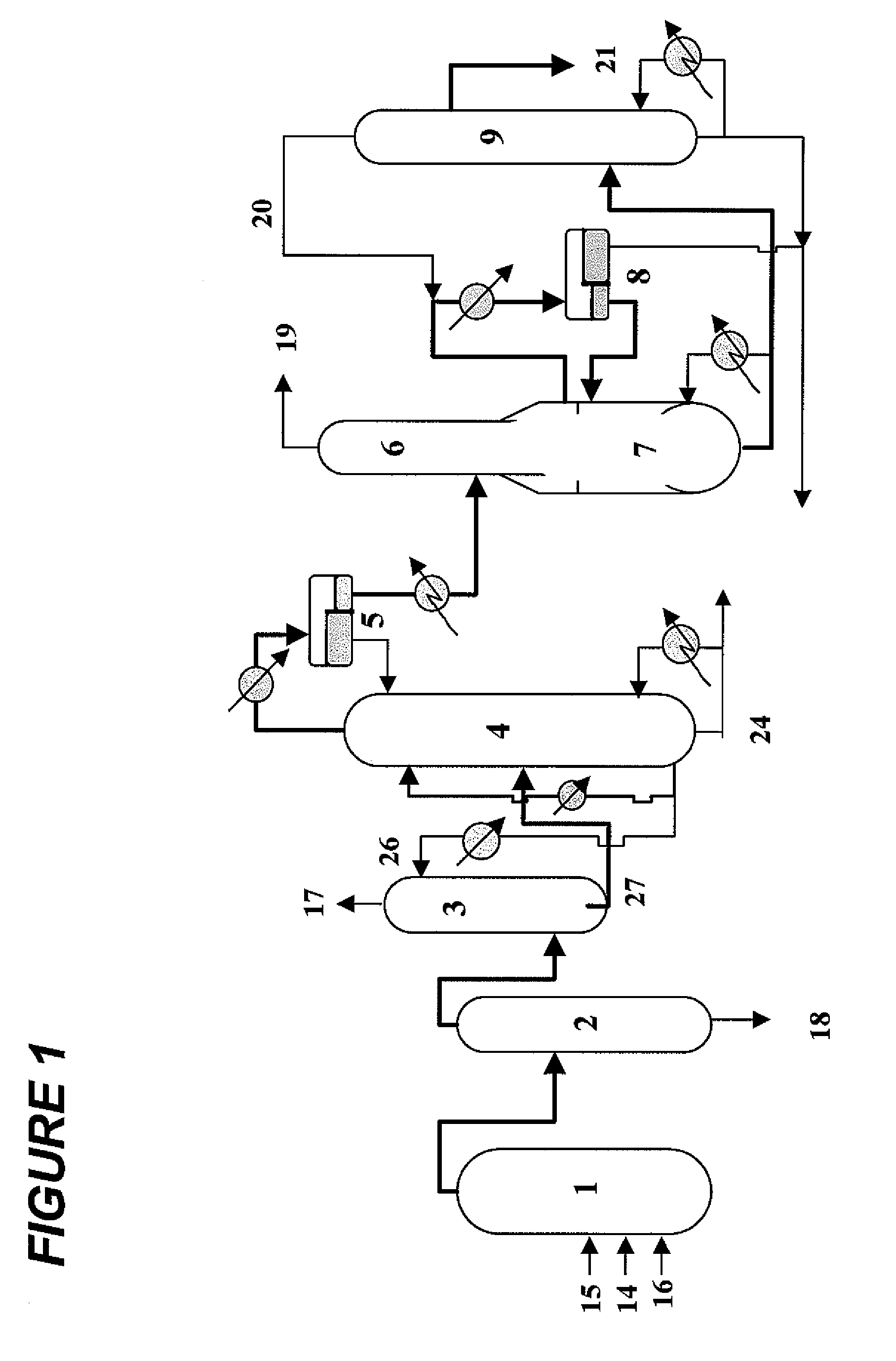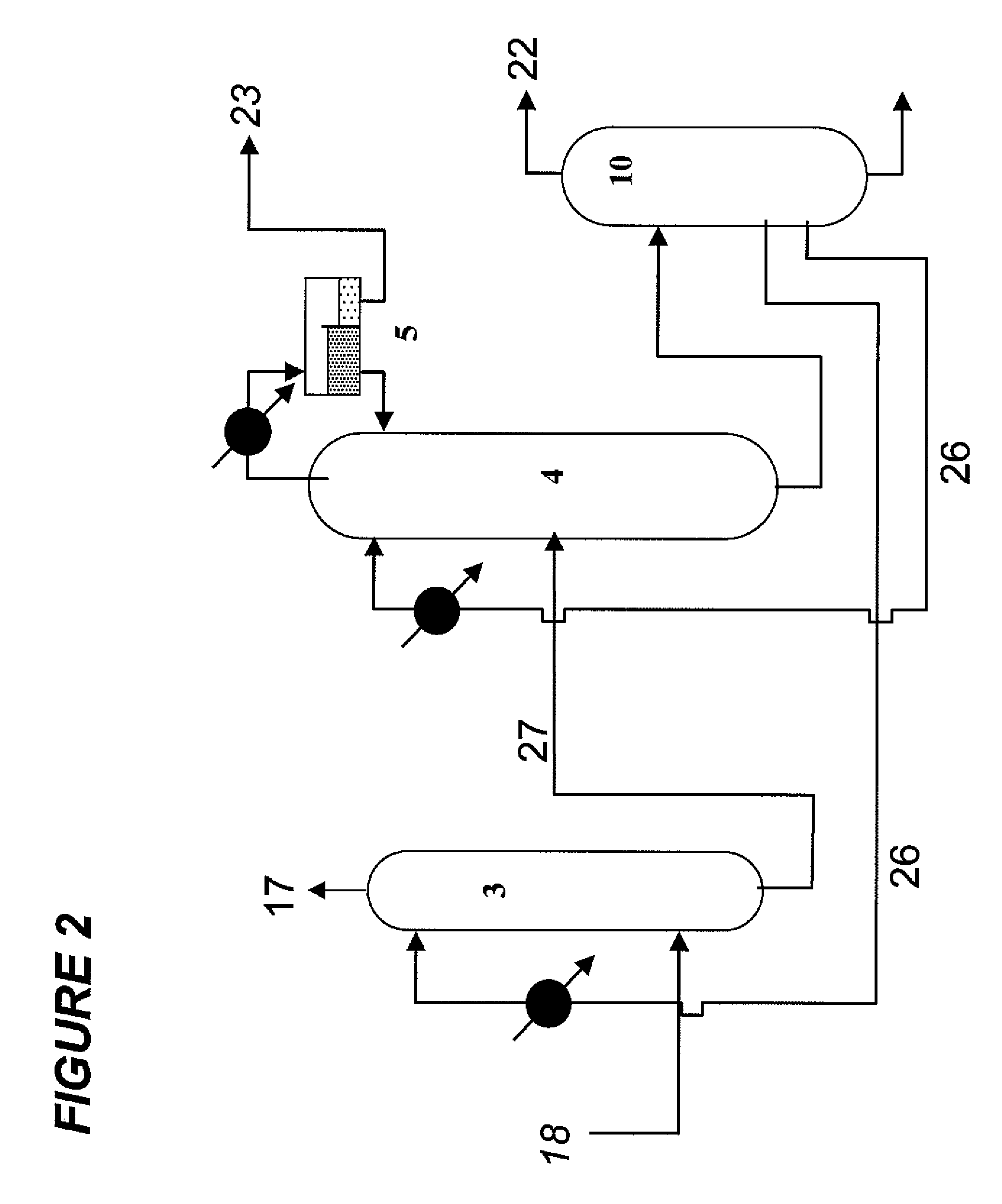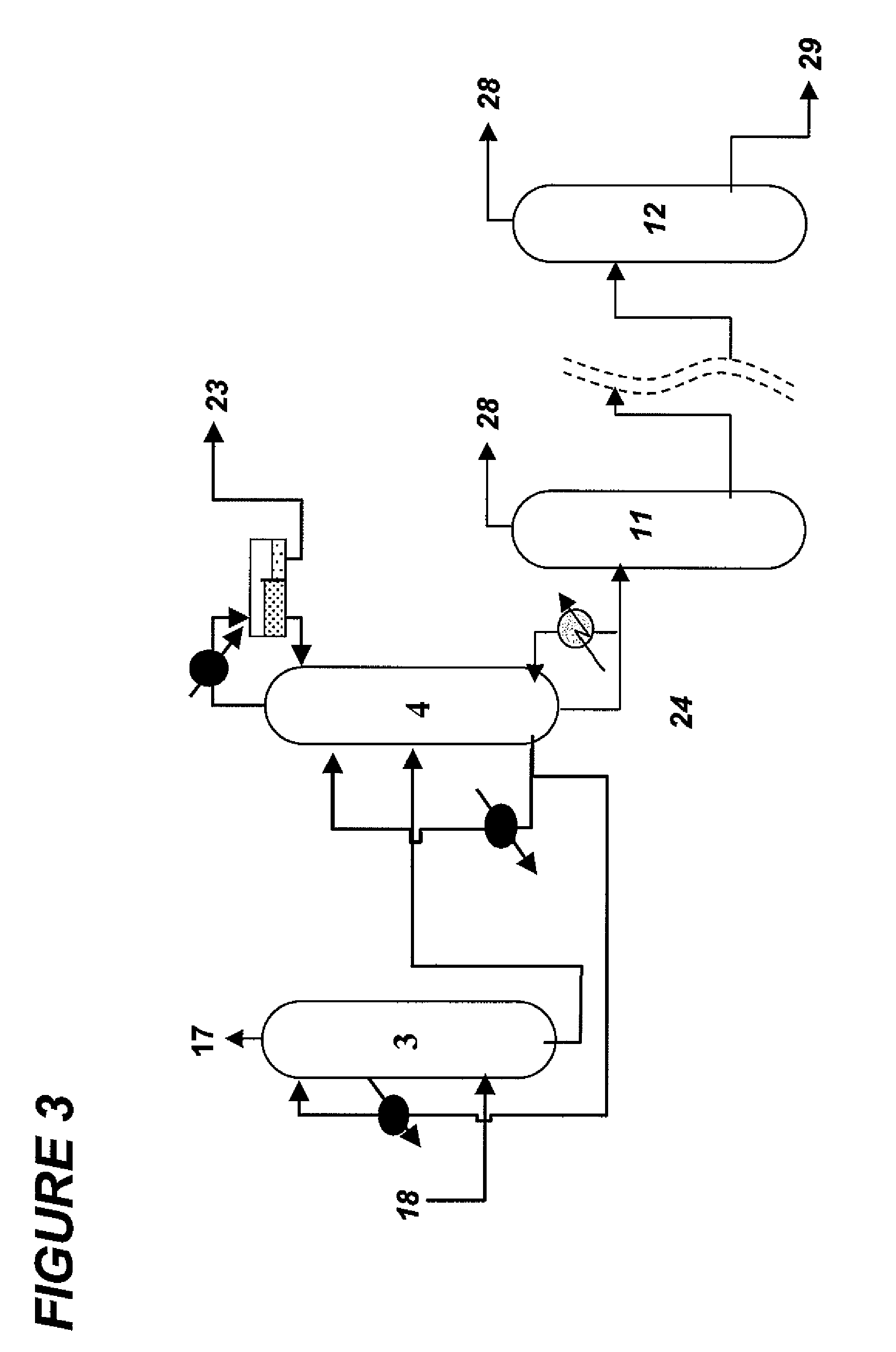Dispersant antifoulant for acrylonitrile
a technology of acrylonitrile and dispersant, which is applied in the directions of distillation, transportation and packaging, organic chemistry, etc., can solve the problems of fouling compounds tend to form and collect, and reducing the efficiency of heat transfer equipmen
- Summary
- Abstract
- Description
- Claims
- Application Information
AI Technical Summary
Benefits of technology
Problems solved by technology
Method used
Image
Examples
example 1a
Dispersion Test Simulating the Solvent Water Cooler Fouling
[0028]A sample of foulant deposit material was taken from the recovery solvent water cooling exchanger of an acrylonitrile plant. The foulant sample was dried and ground into powder. A foulant solution was prepared by dissolving the foulant powder in an organic solvent. In a 15 mL volume centrifugal tube, 15 mL of the recovery column solvent water stream of a recovery column from the same acrylonitrile plant was added. 1 mL of the above prepared foulant solution was added to the centrifugal tube. The content in the tube was well shaken and then the tube was allowed to stand at ambient temperature. Precipitation was seen in the tube. After 2.5 hours about 0.5 mL of precipitate was recorded at the bottom of the tube.
example 2a
Sample Treated with the Inventive Styrene Sulfonate Polymer
[0029]The same procedure as in Example 1A was performed except that before adding the foulant solution, the contents of the tube were dosed with 39 ppm of the invention styrene sulfonate polymer. This tube did not show any precipitation during the 2-day period of this experiment. This example demonstrates that the inventive styrene sulfonate polymer is an effective dispersant for the fouling situation.
example 3a
Sample Treated with Prior Art Dispersants
[0030]The same procedure as in Example 1A was performed except that before adding the foulant solution, the contents of the tube were dosed with 57 ppm of a naphthalene sulfonate polymer. Precipitation did not occur until 20 hours of the settlement. Three days later about 0.2 mL solid precipitate was measured at the bottom of the tube. The naphthalene suflonate polymer is effective only to a certain degree toward this fouling situation.
PUM
| Property | Measurement | Unit |
|---|---|---|
| molecular weight | aaaaa | aaaaa |
| molecular weight | aaaaa | aaaaa |
| volume | aaaaa | aaaaa |
Abstract
Description
Claims
Application Information
 Login to View More
Login to View More - R&D
- Intellectual Property
- Life Sciences
- Materials
- Tech Scout
- Unparalleled Data Quality
- Higher Quality Content
- 60% Fewer Hallucinations
Browse by: Latest US Patents, China's latest patents, Technical Efficacy Thesaurus, Application Domain, Technology Topic, Popular Technical Reports.
© 2025 PatSnap. All rights reserved.Legal|Privacy policy|Modern Slavery Act Transparency Statement|Sitemap|About US| Contact US: help@patsnap.com



